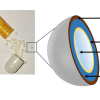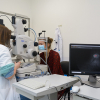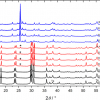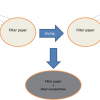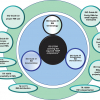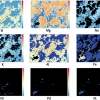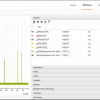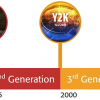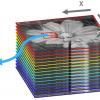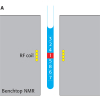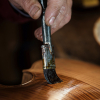Articles and Columns
Once tablets and capsules have been removed from their original packing (which they often have to be), the possibility of certain identification is lost and mixups can happen. The authors have developed a database containing physical information about tablets/capsules and, crucially, ATR/FT-IR spectra. The spectra are usually able to narrow down the “prediction” to the correct medicine.
When previously industrialised or urbanised sites are redeveloped, the contamination of the soil is a vital consideration. It is essential that it is classified correctly as being fit for reuse or only for landfill, or even needing decontamination. When dealing with truck loads of soil, correct, representative sampling is essential to assure safety and to minimise unnecessary costs.
John describes the similarities and differences between the two standards and likens their developments to a pair of parallel railway tracks that occasionally join through the points. John charts the history of GLP, GMP and GCP from before the 1940s, when, as far back as 1906, the US passed the Pure Food and Drug Act.
Eyes may or may not be the window into our souls, but it does seem that they are the window into our brains. This article explains how hyperspectral imaging (HSI) and optical coherence tomography (OCT) can be used to image the retina to diagnose Alzheimer’s Disease. The results are processed by machine learning and give the best performance when HSI and OCT data are combined.
Roman concrete is well known and has lasted well. Now, it seems that the Egyptians used concrete to build at least some of their pyramids. Guy Demortier reports that PIGE and PIXE analyses have revealed the presence of carbon clusters in the material used to build the Khufu (Great) pyramid at Giza. This fits with a model of construction in which the blocks were cast in situ rather than cut out of stone and somehow moved into place. There’s always something new to be learnt!
Holger Gibhardt, Fabian Ziegler and Götz Eckold tell us about the use of Raman spectroscopy to understand complex electric and magnetic interactions in multiferroic ionic crystals. Multiferroics are a relatively new class of materials that exhibit magnetic and electrical ordering simultaneously. Both phenomena are coupled so that electric forces may be used to control the magnetic structure and vice versa. Raman enables understanding of the underlying processes on the atomic level, essential for the development of new materials with these properties.
Surface-enhanced Raman spectroscopy for selected energetic material detection is the topic of Mohamed Mokhtar, Tamer Wafy and Mahmoud Abdelhafiz. They have investigated various approaches to improve the SERS response of explosive materials and have come up with a simpler, one-step method for the detection of natural, solid TNT.
Kim Esbensen has enlisted the support of another doyen of representative sampling, Pentti Minkkinen. In the commercial world, the reason for analysis comes down to money: whether ensuring you are getting what you paid for, but not providing more than necessary, or in regulatory compliance and the avoidance of fines. Kim’s Column has been pushing the importance of not overlooking the sampling step since its beginnings, and this edition provides clear examples where the consequences are costly; very costly.
John Hammond continues his series of Quality Matters Columns looking at Four Generations of Quality, with one on the developments of the ISO Technical Committee responsible for reference materials to its latest incarnation as a Technical Committee.
Whether it is looking at geological samples to exploit potential mineral deposits, identifying the provenance of gemstones or exploring the surface of Mars, LIBS has proven to be a valuable technique. The ability to take the instrument into the field with the development of handheld spectrometers has only enhanced its utility.
Tony Davies and Luc Patiny introduce us to free online NMR data processing tool in “NMRium browser-based nuclear magnetic resonance data processing”. They run through the background to the project, how it works and how you can try it yourself. There is a video introduction and an online demo page where you can play with different scenarios.
Many of you will be working in the cancer field, whether in diagnosis or research, in which case you will be very interested in this Sampling Column. Even if this is not your field of work, you will be interested from a personal point of view! It presents a fascinating idea and solution to improving the identification of different parts of a tumour and, thus, to provide better personalised treatment. “…in solid tumour oncology, representative sampling is truly a matter of life or death…”
John Hammond continues his journey through four generations of quality with “’Don’t risk it’. Accreditation standards and their role in quality assurance”. John reviews the two main ISO 17000 series accreditation standards—ISO/IEC 170251 and ISO 17034—their impact on quality assurance, testing or calibration laboratories, and how these standards have evolved and continue to be implemented.
What should we be calling the various types of spectral imaging? The authors lay out some suggestions and welcome your views.
This cannot be true—surely sampling and weighing are different activities. Well yes—and no! Sampling and weighing of traded metal, mineral and agro commodities are different activities—but at one or several stages in the supply chain they will come together in a single focus point, which is value ($, EUR).
The SensorFINT COST Action is a European Network for assuring food integrity using non-destructive spectral sensors.
Following our articles on the FAIR initiative, we now look at some examples of the FAIRification of data handling, collection and archiving.
This article concentrates on the International Organization for Standardization (ISO) organisation, its standards and their place within the Quality environment. By definition, it discusses the role of ISO in the administration and control of these standards and their evolution and harmonisation into the standards currently in existence.
This article describes a clever adaptation to benchtop NMR experiments that allows the collection of multiple scans (to produce high signal-to-noise ratios) without the time penalties involved.
Cultural heritage is a growing application area for spectroscopy, and our second article describes how infrared and X-ray spectroscopy are being used to explore the coatings used by the old Cremonese makers that produced such outstanding sound.

